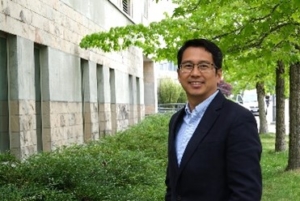
Increased Strength of HemFir (N) Expands Structural Application in Heavy Timber Construction
March 11 @ 12:00 pm - 1:00 pm
AIBC 1 Core LU
An in-grade testing program on HemFir (N) timbers, conducted by the University of British Columbia Timber Engineering and Applied Mechanics (TEAM) Laboratory, evaluated 1,212 full size specimens in static bending and 921 specimens in small, clear tests. Significant increases in the specified bending strength fb of HemFir (N) ranged from 14% for the select structural grade to 53% in the No.2 grade. Based on the in-grade test results, the Canadian Code on Engineering Design in Wood CSA 086:19 has published new specified bending strength properties of HemFir (N) Beams and Stringers grades.
The increased specified bending strength properties of HemFir (N) Beams and Stringers grades opens up opportunities for structural application of the product. For example, comparing the specified strength properties of HemFir (N) to Douglas Fir-Larch Beams and Stringers, the No.2 HemFir (N) material (fb=14.4 MPa and E=11 GPa) exceeded the No.2 Douglas Fir-Larch material (fb=9.0 MPa and E=9.5 GPa) significantly.
In this session we will look at how the HemFir (N) code change by the CSA O86 Technical Committee on Engineering Design in Wood, the Canadian Standard, opens up more selection opportunities for designers and expands the structural application of HemFir (N) material in heavy timber construction.
Learning Objectives:
- Understand how in-grade testing works and why it matters
- Review the impact of in-grade testing on the strength properties of lumber products
- Recognize the technical performance, sustainability and versatility of HemFir Timbers in different applications
- Discover new applications for HemFir (N)
Registration Link: https://us02web.zoom.us/meeting/register/tZEqfumprjIqGdaXSGpZ3PJj9FeV6RWrI8ZE
Presenter:

Dr. Minghao Li is an associate professor in Department of Wood Science at UBC. He obtained his Ph.D. degree in structural timber engineering from UBC and worked as a faculty member in Department of Civil & Natural Resources Engineering at University of Canterbury, New Zealand from 2014 to 2022. Dr. Li has 20 years research experience in developing high performance timber building products, connections and systems. He has been awarded over $2 million grants to develop robust and innovative timber solutions and transform the way we think about the potential of wood for a sustainable built environment. Dr. Li has made significant contributions to timber design standards and technical guides by serving on numerous technical committees and working groups. He has published 100+ peer reviewed journal and conference articles as well as numerous technical reports. His research has also been internationally recognized and he was on the Stanford University global top 2% scientists list for 2021.